Origins of the San Rocco Community
The earliest Italians who came to Chicago Heights arrived in town in the 1890s; immigration accelerated around the turn of the century. These people arrived without a knowledge of the English language and without familiarity with the American political and legal system. For the most part, these immigrants came from six small towns: San Benedetto del Tronto, on the Adriatic, Montepradone, Amaseno, just south of Rome, Caccamo in Sicily, Viletta Barrea, and Castel di Sangro. About half of the Chicago Heights Italians lived in the neighborhood known as the Hill (also called "Hungry Hill," because people there were not well off). By and large, what attracted people to the area was the availability of work, especially with Inland Steel, Candey-Otto, and other manufacturing entities. Some went to work for Dutch farmers in the onion fields of South Holland, just to the north.
In 1905, a new Italian parish was formed in Chicago Heights, named Our Lady of Pompeii. Father Prosseda celebrated Mass at 17th and Center Avenue. Martin H. Kilgallon (a generous Irish Catholic) donated some land between Portand and Wentworth; ground was broken for a church, on July 30, 1906. On Sept. 2, the cornerstone of the new St. Rocco Church was laid; Archbishop Quigley dedicated the completed building on Dec. 9. From its inception, St. Rocco was a national parish, meant to serve those who spoke Italian as their first language. Almost all the people from Caccamo, Amaseno, and Montepradone went to St. Rocco as their parish of choice. Many others, especially those who preferred English, went to St. Agnes, the mother church of the area, the territorial parish.
(Although predominantly Italian, St. Agnes was known as the "Irish church" because it was staffed by Irish-American priests. Today, St. Agnes survives, having absorbed people from St. Casimir's, St. Joseph's, and St. Anne's.)
In 1904, the Precious Blood Fathers sent two priests to Chicago, to serve Italian immigrants: Father Eduardo Riccardelli, C.PP.S., and Father Pasquale Renzullo, C.PP.S.
The first pastor of St. Rocco, then, was Father Pasquale Renzullo, C.PP.S. (Contrary to Father Harry Koenig, in A History of the Parishes of the Archdiocese of Chicago, Father Renzullo was not a member of the Scallabrini Order.) He also took care of the Italian church in Blue Island, St. Donatus, from 1911 to 1912. A parish school opened in Dec., 1912, operated by the Sisters of St. Joseph from LaGrange, Illinois; it was named Mt. Carmel School. Archbishop Quigley paid the salaries of the sisters, $20 per month, as well as the tuition of every student. A convent was completed in September, 1913. In the New World, the newspaper of the Archdiocese of Chicago, the complex was described in glowing terms:
The church, dedicated to St. Roch, parish house and school, are brick structures, built substantially and along harmonious lines, that give artistic finish to the whole plan. The church is commodious, tastefully decorated and furnished; the school rooms are large and cheerful; the parish assembly hall, with spacious stage, accommodates seven hundred people, and the pastor's house is one of the best in the archdiocese. All this was done by this zealous priest to make his people proud of their religion.
In 1921, Father Renzullo resigned from the priesthood, to get married. As a result, a small group of people left St. Rocco to join the Italian Presbyterian Church of Our Saviour, in part because of the work of a minister, Pastor Carducci. Already, the First Presbyterian Church in 1910 had appointed a Pastor Eugenio DeLuca, to do his best to convert the immigrant Italians to the Reformed faith. He had started his new church in 1912, with the financial help of the wealthy Presbyterians. Now, in 1921, Pastor Carducci was able to reap a harvest of the disgruntled. According to a local historian, Dominic Candeloro, these dissidents were never more than 7% of the Italian community in Chicago Heights.
(Today, their descendants have intermarried with non-Italians and dwindled in numbers. Their new church is about three blocks west of St. Kieran's in Chicago Heights. Their former church building on the Hill is now occupied by a small, Spanish-speaking, Protestant congregation. In due time, the Church of Our Saviour disassociated itself from the Presbyterian Church in part because of the denomination's financial participation in left-wing social causes. In 2002, there were only about twenty or thirty families left; they sold the building on 195th to the "New Testament Christian Church" and merged with it.)



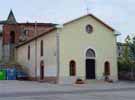
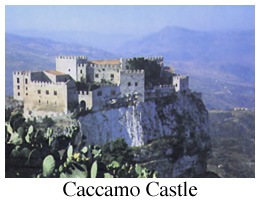
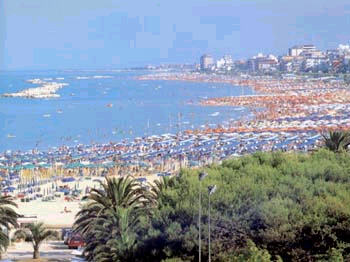
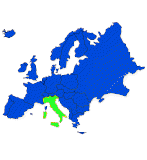
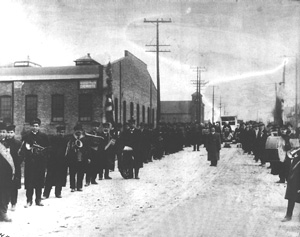
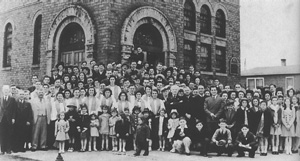
 top
top